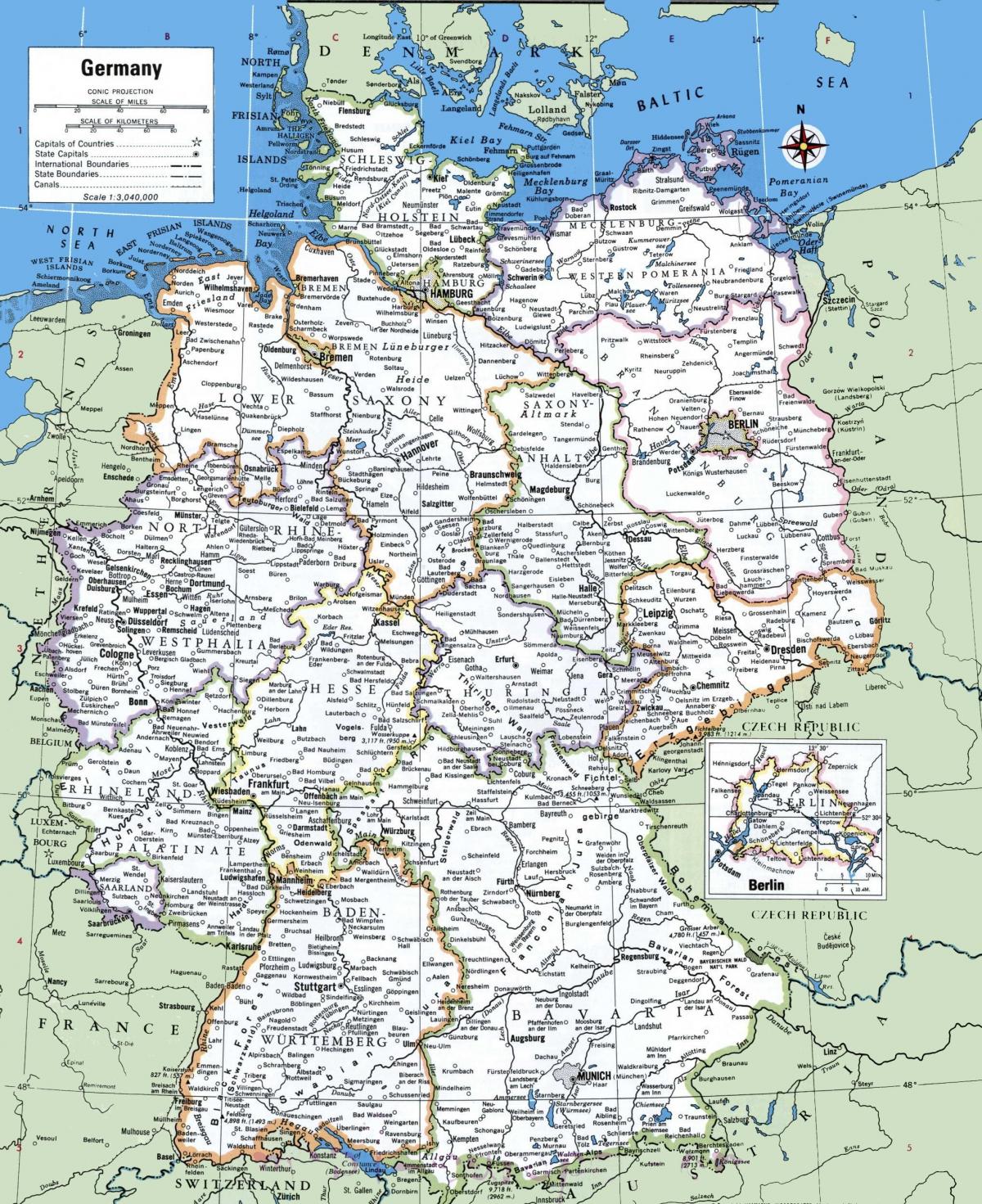search
Map of Germany with cities
Germany main cities map. Map of Germany with cities (Western Europe - Europe) to print. Map of Germany with cities (Western Europe - Europe) to download. Germany mix of history, culture, industry and beautiful natural scenery have led to rapid growth during the years and one of the largest poplations in the world. Germany has three cities that each have over one million residents, which contributes to the high population numbers. However, it also has small- and medium-sized cities and towns that contribute to its overall population. Almost 100 of the country cities boast populations of over 100,000, while over 1,500 cities have populations that exceed 10,000 residents as its shown in the map of Germany with cities. In total, Germany cities and towns number 2,059 as of early 2016.
The cities are divided among the country 16 federally-desginated states. The state of Bavaria encompasses over 300 cities and towns, while Hamburg and Berlin are made up of just one city each, with both being two of the most populous cities in the country. When it comes to the total size of Germany, it is just the 63rd largest country in the world. which makes its rank as one of the most populous countries even more impressive. Germany has 3 cities with more than a million people, 97 cities with between 100,000 and 1 million people, and 1534 cities with between 10,000 and 100,000 people. The largest city in Germany is Berlin, with a population of 3,426,354 people as you can see in the map of Germany with cities.
Berlin is the capital of Germany and holds city-state status as the city is surrounded by the state of Brandenburg. Berlin is the largest city in Germany by population. Around 3,520,031 people live in Berlin. Forests, parks, rivers, and lakes cover roughly 30% of the capital region. This city was also hosted the largest number of start-up companies in Europe in 2015. Hamburg as its mentioned in the map of Germany with cities is the second-largest city in Germany, with a population of around 1.7 million. Located in the country's north, Hamburg was once known for being an important industrial city. Today, it is known for being a prominent tourist attraction and for its large entertainment district. Hamburg also has the claim to fame of having more bridges than any other city in the world - yes, even more than Venice.
Munich is the third-largest city in Germany and the largest city in the region of Bavaria. Munich is perhaps best known for Oktoberfest, an annual festival of German culture that is held in October. The area surrounding Munich has the highest population density in Germany as its shown in the map of Germany with cities. Munich is home to one of the largest parks in the world, the English Garden (The Englische Garten). Cologne is found near the German borders with Belgium and the Netherlands. Cologne is famous for its Cologne Cathedral, which is Germany most visited landmark and hosts around 20,000 visitors a day. The Cologne Cathedral is notable for its long construction process, which took a total of 632 years! Cologne is an important city in Germany Rhineland region, which is roughly located in the middle of the country.
Formerly one of the most important cities of the Holy Roman Empire, Frankfurt today is known as an important financial center not only for Germany but for the European Union as a whole. Frankfurt financial center features many high-rise buildings, making it one of the most recognizable skylines of Europe. Frankfurt is also known for being home to the largest and busiest airport in Germany as well as in Europe as a whole. Stuttgart, located in Baden-Wurttemberg, has a population of 623,738. The city is covered in hilly terrain with many green spaces as its mentioned in the map of Germany with cities. The area has a growing economy and therefore, a fast growing population. Düsseldorf serves as the state capital of North Rhine-Westphalia and therefore is the center of public administrative activities which provide the majority of jobs.


